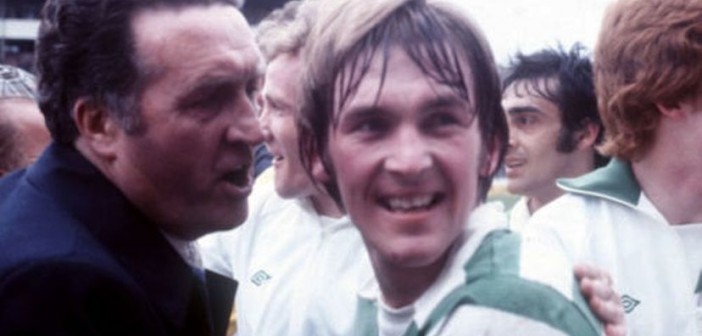The name ‘Stevie Murray’ is one that will be familiar to generations of Celtic supporters, with not one but three players of that name being on the club’s books since the 1970s.
Stevie Murray mark IV, however, is not carving out a career as a classy midfielder in the green-and-white hoops, but is instead making his name in Celtic circles for his fine contribution to the club’s ever-expanding literary canon.
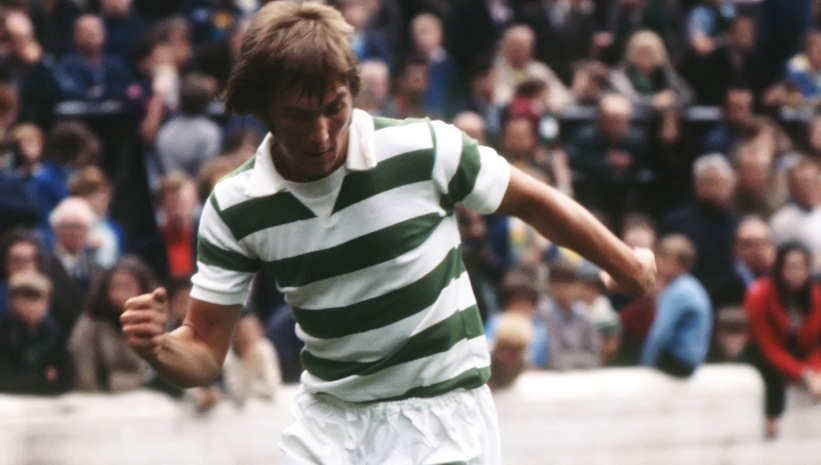
Having attended the launch of Kenny of the Celtic, Paul John Dykes subsequently took the opportunity to discuss all things Celtic with author Stephen Murray:
How did your love affair with Celtic begin?
“I can’t remember a time when I didn’t know about Celtic. As a wee boy I remember Celtic programmes, Celtic Views and newspapers being scattered around the house, and it just stemmed from there. My dad was a Celtic fan and I am an only child so the topic of conversation between us, from an early age, was almost always around Celtic and football in general.”
What are your earliest memories of watching Celtic?
“I was first taken around 1971-1972. The first game I can remember vividly was a 4-2 win against Hearts in November 1972 at Parkhead when Hearts wore an unusual Ajax-style strip. The new main stand had just been completed and it was a great view for youngsters from there in those early days.”
What types of Celtic songs (that have perhaps been lost to the depths of time) can you remember from the terraces back then?
“Almost all the players had their own unique individual songs that the fans sang to them, such as ‘Jimmy Johnstone on the wing.’ The one I remember best was the Harry Hood song to the tune of the Robin Hood TV theme: ‘Harry Hood, Harry Hood, running through the glen. Harry Hood, Harry Hood, with his Fenian men. Feared by the bad, loved by the good – Harry Hood! Harry Hood! Harry Hood!'”
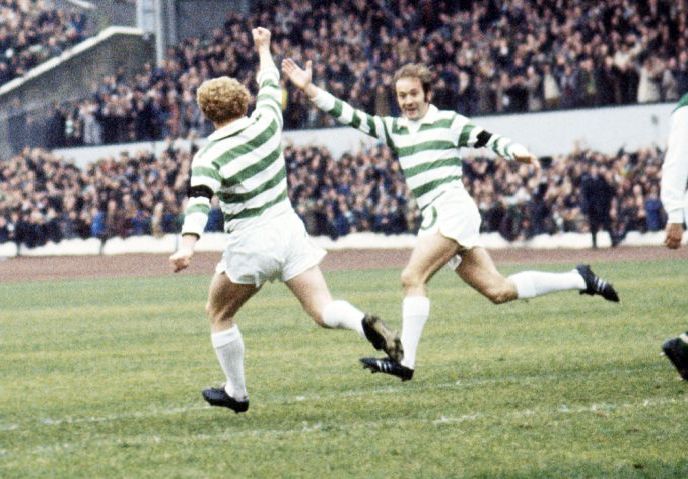
Which elements (if any) do you miss most about the football of your youth?
“I miss being able to move around the ground. There was no strict segregation at Parkhead (apart from Rangers games) until 1985. My dad used to lift me in to the Rangers’ end for the first half of the game and then we’d walk through the Jungle at half time. Traditionally, Celtic always shoot into the Celtic end in the second half so we’d then watch the second half at the Celtic end.”
How did you find out that Kenny Dalglish had left Celtic in 1977 and how did this make you feel?
“We were just back from a family holiday in Majorca so it was still the school holidays. There was some talk in the papers but Celtic were in a strong bargaining position as freedom of contract had not come in yet (that was a few years off) and a player could only leave if their club agreed to sell them.
My dad always bought a paper before work, and one morning he woke me up to show me that Kenny had signed for Liverpool. We were both devastated and I think he just woke me up to share his grief with someone before he went to work. It took me a long time to come to terms with Kenny leaving. Many fans felt a sense of betrayal. Dalglish’s departure made me feel far worse than losing any game I’ve ever experienced in all my days supporting Celtic. And the success he enjoyed at Liverpool only served to rub salt in the wound.”
What was your reaction to Jock Stein leaving, and was Billy McNeill the only man to replace him?
“For the first 12 years of my life Jock Stein was Celtic manager, so it was a very strange feeling when he departed in 1978. For the older guys, from my dad’s era, they were bitterly disappointed as they had worshipped the big man. By this time Billy McNeill had made an impression at Aberdeen and there was really only one man to take over, and that was Billy.

Interestingly, I had an uncle who swore that Bertie Auld would have been a better bet. Bertie had Partick Thistle high up in the top league at that time with very meagre resources. My uncle always maintained Bertie would have been a great Celtic manager on a tactical level. Records show that three men were considered – Billy, Bertie and Pat Crerand – with Billy getting the nod. It’s funny to think that Billy was only Celtic’s fifth manager in 90 years in 1978.”
How special was the 1978-79 season, and what were the pivotal factors in the run that culminated in ten men winning the league?
“I was in first year at school and would describe it as the best time of my young life. The thing that saved Celtic that year was the weather. There was ice and snow on a huge scale and Celtic did not play a league game between 23rd December and 3rd March – ten long weeks. At one point we were seventh in a ten-team league, although we had a load of games in hand. We were able to recharge the batteries during that break and from March onwards we went on a great run.
Another factor was that the league was very competitive – everyone was capable of beating each other. Celtic, Rangers, Aberdeen, Dundee United and St Mirren all had spells on top of the league at different times. United were actually big favourites until they lost to Rangers and Celtic in successive weeks in late April.”
What were your Celtic-supporting highlights of the 1980s?
“My two favourite memories are the 1981 and 1982 league title wins. Billy McNeill had built a hugely entertaining team by that point and they were never really given the credit they should have got. They played a great brand of attacking football every week and sometimes that was their undoing, particularly in Europe.
But they were brilliant to watch. Provan, Burns, McGarvey, MacLeod, Nicholas, McCluskey, every one a class act, playing at his peak. Unfortunately, Billy McNeill’s departure in 1983 was a real blow and that team then broke up.”
What were the main reasons that Celtic failed to capitalise on the sensational centenary season?
“Lack of ambition and lack of investment. The board of directors at that time were not bad guys but they were severely out of their depth as businessmen. Rangers stole a march on us financially and we were unable (or unwilling) to compete with them. We lost a lot of experienced players like McAvennie, Aitken, Burns, McGhee, McCarthy and Stark in a very short period and just couldn’t replace them. After that the club became rudderless and totally lacked leadership.”
How difficult was it to be a supporter in the pre-McCann years, and what has been your most memorable experience as a Celtic fan since?
“On a personal level I was the treasurer of the Govan Emerald CSC from August 1989 to May 1997 and we won one paltry trophy during those eight seasons. It was heartbreaking. My only comfort is that the Emerald survived and is still on the road until this day.
My dad used to compare those days with the early ’60s but at least back then the likes of Dundee and Kilmarnock won the league and broke up any Rangers domination. But by the ’90s it was Rangers all the way with all the media fanfare which came with it. My most memorable moment as a fan in the new era would have to be beating St Johnstone in 1998 to win the league.
Forget about 10-in-a-row, we had to win that one just for ourselves.”
How did you become involved in Celtic Underground, and what prompted you to create your first podcast?
“I got in touch with Harry Brady and Eddie Pearson who were the main men on the CU site (and still are). In the beginning, I just wrote articles surrounding old photos etc. When I started my research for the Ten Men book I made a point of interviewing the likes of Davie Provan, Mike Conroy and Andy Lynch for a podcast about their careers, as I thought it would be interesting, and it just went from there.”
How many interviews have you contributed to the CU podcast, and which have been your personal highlights?
“There must be over 30, which I have done on my own. They have been with ex-Celtic players, media personalities and fans, such as guys who have written books and need a bit of publicity with it. From memory my favourite ones were Provan, Conroy, Pat Stanton, Joe Craig and Frank McGarvey.
I haven’t met one ex-Celt I have been disappointed in. They are all very proud of their Celtic careers and are down-to-earth, decent guys. From the media, Graham Spiers and Jim Spence were terrific, genuine football fans with loads of personality. I would also recommend the recent one with Bernard Ponsonby from STV.”
Your writing progressed on to the pages of the Celtic programme. How did this opportunity arise, and did it encourage you to embark on writing your first book?
“I always bought a programme but a few years back I thought that there wasn’t a great deal of reading in it. I contacted Paul Cuddihy and wrote a couple of wee pieces and it snowballed from there. Each season I do a weekly series such as ‘His Greatest Game’ and ‘Debut Days’. This season it’s ‘Unsung Heroes’.”
What prompted you to write your first Celtic book? How long had you planned to work on the project? How did you approach the research, writing, and publishing process?
“I had longed for someone to write a book about the 4-2 game in 1979. I was toying with the idea of doing it myself when I met Tom Campbell at John Doyle’s grave at Kilmarnock on the day of the tremendous 3-3 draw at Rugby Park in October 2011. I asked Tom if he was working on anything and he said was doing something on the 4-2 game, so I was rather crestfallen and I lost interest.
Around a year passed and there was nothing more from Tom, so my wife encouraged me to do my own book for my own satisfaction, which I found to be a very enjoyable experience. I was very lucky to get Davie Provan and Mike Conroy on board early as they had really clear recollections of what had gone on that season. I wasn’t confident enough to find a publisher so self publishing on Amazon was my way to go and it all went fairly well.”
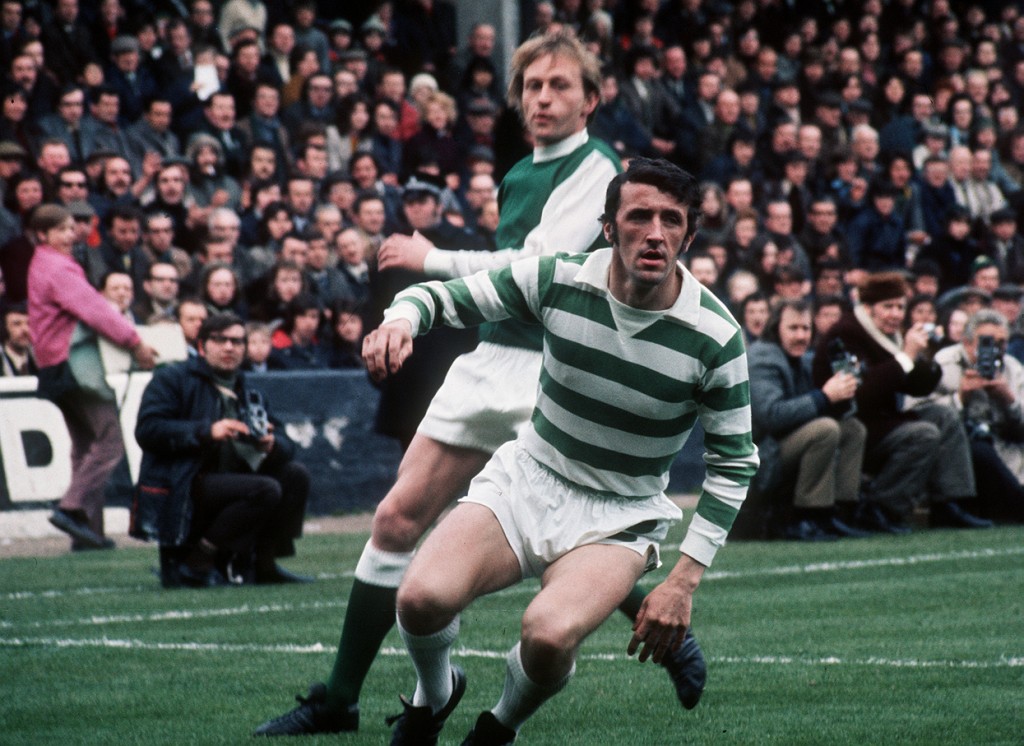
Danny McGrain attended the launch at Celtic Park. How did it feel to work with Danny on this story and do you feel that it’s about time another book was written on him?
“I was really nervous phoning Danny and I then met him in the Glynhill Hotel in Renfrew. He was an absolute gentleman and I thought he couldn’t go up any further in my estimation but he did. He is a very modest man.
Danny missed the first half of the 1978/79 season when Celtic were desperately poor. After his return we won 14 out of 18 games which was the launchpad to that famous ‘4-2’ league title victory. Danny tried to claim that was just a coincidence and that ‘the boys would have won it anyway.’ No way was that a coincidence, his very presence in the side motivated both the other players and the supporters. There have been two books about Danny, one in 1978 and another one in 1987. I know that he wasn’t particularly impressed with either one so there’s definitely another book in him.”
Are there any other ex-players out there whose story you’d be interested in working on?
“That’s a hard one. Most of the biggies have now been done. The hard thing about writing a book is to try and find something that hasn’t been written about before now. There are so many high quality Celtic books out there so it’s getting harder to find a different niche to write about.”
If you were to name a Celtic team made up of the finest players you have witnessed, who would make your greatest XI?
“I won’t include any Lisbon Lions as I never really saw them at their peak. 4-4-2 formation:
Boruc; McGrain, Mjallby, Aitken, Boyd; Provan, McStay, MacLeod, Moravcik, Larsson, Dalglish.”
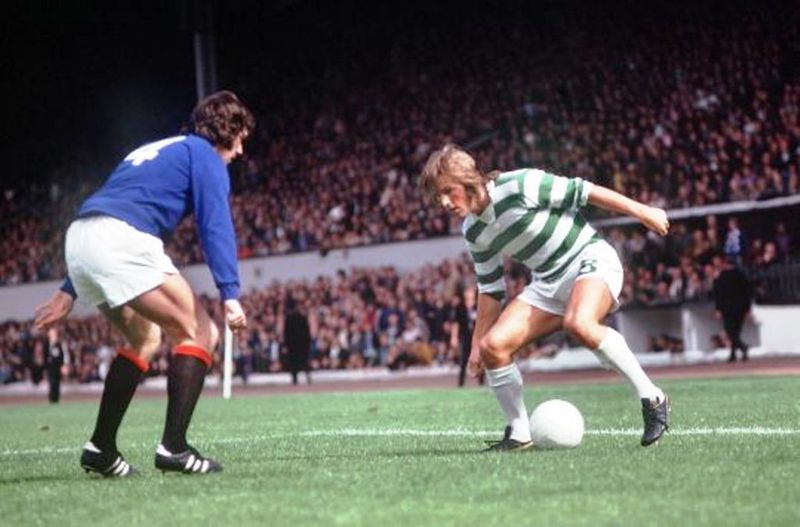
What prompted you to write a book on Kenny Dalglish?
“The reasons I wrote the book were twofold. Firstly, there had been a number of books published on his career and very little space was dedicated to the Celtic years. He was there for ten seasons and an awful lot happened during that time, so this deserved to be looked at in greater detail.
The second reason is that a new generation of fans did not appreciate that Kenny was a notable player at Celtic long before he joined Liverpool. So in some ways I was keen to ‘claim’ him back.
“The book does three things. It tells of Kenny’s Celtic career in full detail but also catalogues the Celtic success years of 1967-1977. The last thing the book does is to note lots of stories and humourous anecdotes from the Celtic supporters of that era.”
Were you tempted to speak to Kenny during the research process? Has he been in touch to offer you any feedback?
“I didn’t want to contact Kenny beacuse I didn’t want to be compromised in any way. Not that that would have been a problem because it’s a totally affectionate recollection of his Celtic days. After the book was published I sent him a copy with a personal messsage. I’ve not heard anything since but that doesn’t surprise me as he is a very private individual who obviously guards his privacy dearly, which is fine.
I’m happy I did it as there are are a lot of guys (and females I discovered!) who still cherish Kenny’s memory in the hoops and think the world of him even to this day.”

What is your typical routine of watching Celtic these days?
“My son is 12 now and we sit in area 445. He plays football on Saturday mornings so there is always a mad rush to get him home, changed and out to Parkhead. I don’t get to as many away games as I would like and my heart goes out to the guys who travel away these days. When I was younger the games all kicked off at 3 p.m. on a Saturday, which was ideal and made it more of a social occasion. You could get a pint or two before and after and still have the best part of Saturday evening to enjoy. These days it’s easy to lose track each weekend as to what day and actual time that Celtic are playing.”
In all your years of watching Celtic, how does the current manager and team compare?
“This team and current managerial set-up is right up there with any Celtic team I’ve seen. Players such as Sinclair, Dembele, Tierney and Griffiths are as good as I’ve witnessed and play at a very high level. When you add Šimunović, Brown, Gordon, Forrest, Armstrong, Roberts and Rogic then that’s some group. The hope now is that we will kick on this summer and get the two or three quality players we need to get us to the next level.”
Where can supporters get their copy of Kenny of the Celtic?
It is available online from cqnbookstore.com and you can get it in all the Celtic stores and also at selected Waterstones stores.

